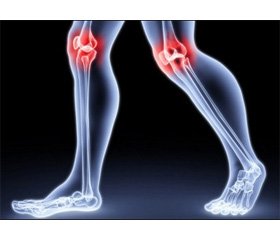Журнал «Боль. Суставы. Позвоночник» 2 (18) 2015
Вернуться к номеру
Application of Natural Factors for Prophylaxis and Treatment of Patients with Osteoarthritis with Low Bone Density
Авторы: Bakalyuk T.G. - Ternopil State Medical University named after I.Ya. Gorbachevsky, Ternopil, Ukraine
Рубрики: Ревматология, Травматология и ортопедия
Разделы: Медицинские форумы
Версия для печати
Статья опубликована на с. 82-83
Introduction. Osteoarthritis (OA) — a chronic progressive disease of the joints, which revealed not only in losing of joint cartilage but also changes in bone tissue. Proved combination of influence of osteoarthritis and osteodeficiency on each other as the state of bone mass of the skeleton affects the clinical manifestations and reflects on course of osteoarthritis. Nevertheless there are some differences in the issues of etiology and pathogenesis of OA, there is no doubt about the perspectives of a comprehensive treatment of OA by finding medication and environmental factors that can influence the basic mechanisms of pathological process — a violation of bone and cartilage tissues. One of the most effective treatment methods of degenerative–dystrophic di–seases of the musculoskeletal system is sulfide balneotherapy. The mechanism of therapeutic action of hydrogen sulfide treatment in OA is mediated by activation of protective and adaptive forces (primarily the immune and pituitary–adrenal systems), and increased local blood and lymph circulation, improve metabolic and trophic processes, activation of regenerative factors.
Aim of the studying — to study biochemical markers of bone metabolism in patients with osteoarthritis with reduced bone density using of sulphide balneotherapy in the rehabilitation period.
Materials and methods. We observed 56 individuals (women) with osteoarthritis of the knee joints with reduced bone density, age 43–72 years (average 55.92 ± 1.05 yrs), disease duration 2–18 years (7.76 ± 0.60). All patients were in menopausal period, menopausal duration from 1 to 18 years (6.89 ± 0.64 yrs) had not concomitant pathology that could affect the metabolism of bone tissue. X–ray stage of OA determined according to the classification of J.N. Kellgren and J.S. Lawrence (I stage — 12 patients, II stage — 38, III stage — 6). In a serum of blood samples were detected indicators of mineral metabolism (total content of calcium and inorganic phosphorus) and markers of bone formation (alkaline phosphatase, parathyroid hormone (PTH)). Indicators of bone mineral density (BMD) were determined by using double–photon X–ray densitometer (Dual Energy X–Ray Absorptiometry — DXA) Lunar corp. company (Madison, WI) — Lunar DPX–A. In 39 patients were diagnosed osteopenia, in 17 — osteoporosis. All patients were at the sanatorium stage of rehabilitation and by the method of randomization were divided into two groups. Treatment complexes in two groups includes procedures of spa — treatment and differed by –using of balneofactors: in the first group were used hydrogen sulfide baths, a concentration of 80 mg/L for 15 minutes at a temperature of 36–37 °C, at the course of 8 treatments; in the second group — sodium chloride bath concentration of 25 g/L, for 15 minutes at a temperature of 36–37 °C, at the course of 8 treatments.
Results. Indicators of mineral metabolism in patients with OA had not significant changes after treatment and accurate dynamics of these parameters in both groups were not observed. The level of alkaline phosphatase under the influence of sulphide balneotherapy compared with medical complex using sodium chloride baths decreased (from 142.39 ± 2.18 U/l to 124.71 ± 3.60 U/l in group I, group II in 135 57.00 ± 1.79 U/l), PTH levels also had positive dynamics under the influence of hydrogen sulfide baths (with 78.9 ± 3.8 pg/ml to 63.2 ± 2.9 pg/ml and group II in group to 77.9 ± 4.3 pg/ml), which suppose to think about a slowdown of bone remodeling processes under the influence of sulphide balneotherapy.
Conclusion. Treatment complex with the inclusion of hydrogen sulfide baths in patients with osteoarthritis with low bone density has not only analgesic effect but also allows you to impede the bones mass loss and, therefore, can be used not only for the treatment of osteoarthritis with reduced bone density but also for the prevention of osteoarthritis and osteoporosis.

